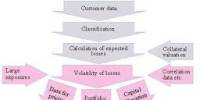Company overview and Financial Observation of Transcom Group
The Company
Originated with tea plantation in 1885 is today, one of the leading and fastest growing diversified business houses in Bangladesh employing over 5000 people. Not many industrial groups in Bangladesh can claim a history of continuous business pursuits stretching back over 100 years. Initially tea and jute formed the backbone of the family business. Although these are still part of the activities, they contribute marginally to the overall group turnover
Transcom Today
These early industrial ventures have moved over to businesses involved in high-tech manufacturing, international trading and distribution, forming strong ties with a host of blue chip multinational companies. In recent years Transcom has emerged as an increasingly significant media house in Bangladesh
Transcom Electronics Limited
Transcom Electronics Ltd. The company is the official licensee of PHILIPS ELECTRONICS N.V. Holland for lighting products, Radio and TV sets.
The lighting division distributes PHILIPS lighting products to over 45000 outlets all over the country through an extensive dealer network. A separate professional lighting team handles energy saving, special applications and sports lighting. The consumer electronics division distributes PHlLIPS television, radios, music systems and domestic appliances.
It is also the authorized sole distributor in Bangladesh for WHIRLPOOL USA. The products include refrigerators, freezers, washing machines, microwave ovens and domestic appliances.
Vision for the future
The Vision of the company is “To be the leader in the Electronics industry in the region and provide a complete solution and the brand image to the precious customers.” There is an emphasis on creating a strong brand image in the customers’ mind. Such customers will require strong support for brand loyalty to develop.
Financial Analysis
Financial analysis is the process of determining the significant operating and financial characteristics of a firm from accounting data and financial statements. The goal of such analysis is to determine the efficiency and performance of the firm ‘s management, as reflected in the financial records and reports. The analyst is attempting to measure the firm ‘s liquidity, profitability, and other indications that business in conducted in a rational and orderly way. If a firm does not achieve financial norms for its industry or relationships among data that seem reasonable, the analysts note the deviations. The burden of explaining the apparent problems may then be placed upon management.
In this chapter, I will develop ratio analysis as the primary tools for examining the firm’s financial position and performance. I will recognize two viewpoints in receiving and evaluating financial data:
- External Analysis: This is performed by outsiders to the firm, such as creditors, stockholders, or investment analysts. It makes use of existing financial statements and involves limited access to confidential information on a firm.
- Internal analysis: This is performed by the corporate finance and accounting departments and is more detailed than external analysis. These departments have available more detailed and current information than is available to outsiders.
They arc able to prepare pro forma, or future, statements and are able to produce a more accurate and timely analysis of the firm’s strengths and weaknesses
The two type of benchmark for making financial comparisons as follows:
- Time series analysis: In this type of analysis, information for a single company is compared over time. For example; a company may have a current ratio of 1.2.
Without additional information, this ratio does not tell us very much. Time series analysis might tell us that the ratio has declined each year for the past years, from a high of2. This Time series information cause us to do future study concerning the factors that caused a steady deterioration if this ratio in the recent past.
- Comparison with similar companies: Financial results often are affected by industry and economy wide factors. By comparing with other one in the same line business, the analyst can get better insight concerning specific company performance.
For my report, choose time series analysis for analyzing the company’s financial performance because the industrial data is not available in the market.
Separating Causes and Symptoms of Problems
Financial analysis is used primarily to gain insights into operating and financial problems confronting the firm. With respect to these problems, I must be careful to distinguish between the cause of the problem and a symptom of it. A cause is an event that produces a result or effect; in our case the result is a problem. A symptom is a visible indicator that a problem exists. The firm may observe symptoms, such as a low level of profits, but it must deal with causes of problems, such as high costs. If it does not deal with the problem cause, the firm will probably riot be able to correct the problem.
As we will see in this chapter, financial ratios are used to locate symptoms of problems.Once the symptoms have been located, the financial analyst must determine the cause of any problem. Then he must find a solution for it.
Financial Ratios
A ratio may be defined as a fixed relationship in degree or number between two numbers.
In finance, ratios are used to point out relationships that are not obvious from the raw data. Some uses of ratios are the following:
- To Compare Different Companies in the same industry: Ratios can highlight the factors associated with successful and unsuccessful firms. They can reveal strong firms and weak firms, overvalued and undervalued firms.
- To Compare Different industries: Every industry has its own unique set of operating and financial characteristics. These can be identified with the aid of ratios.
- To Compare Performance in Different Time Periods: Over a period of years, a firm or an industry develops certain norms that may indicate future success or failure. Relationships change in a firm’s data over different time periods, the ratios may provide clues on trends and future problems.
From all the financial accounts on the balance sheet, income statement, and Cash flow funds statement, it is possible to formulate countless ratios. To be successful in financial analysis, the analyst must select only those ratios that provide significant information about a firm’s situation.
Kinds of Ratios
Financial ratios may be classified a number of ways. One classification scheme uses three major categories:
- Liquidity Ratios: These examine the adequacy of funds, the solvency of the firm, and the firm’s ability to pay its obligations when due.
- Profitability Ratios: These measure the efficiency of the firm ‘s activities and its ability to generate profits.
- Tests of solvency and equity position: It measure the ability of the firm’s to meets its long-term obligation.
- Ownership Ratios: These are generally linked directly or indirectly to profits and liquidity. They assist the stockholder in evaluating the firm’s activities and policies that affect the market price of the common stock.
In my report, I will discuss only the first three kinds of ratio. Ownership ratio will not been discussed, because the firm’s is a private limited company and has no common share in the market.
Liquidity ratio
A firm ‘s ability to pay its debts can be measured partly through the use ofliquidity ratios. Short-term liquidity involves the relationship between current assets and current liabilities. If a firm has sufficient net working capital (the excess of current as sets over current liabilities), it is deemed to have sufficient liquidity. Two ratios are commonly used to measure liquidity directly: the current ratio and the quick ratio, or acid test.
Analyzing Liquiditys
The cash, receivable, and inventory ratio should be used together to gain an overall grasp of the liquidity of the firm. I shall analyze each area and draw conclusion regarding the liquidity of Transcom electronics Limited, using the balance sheet and income state provided.
















